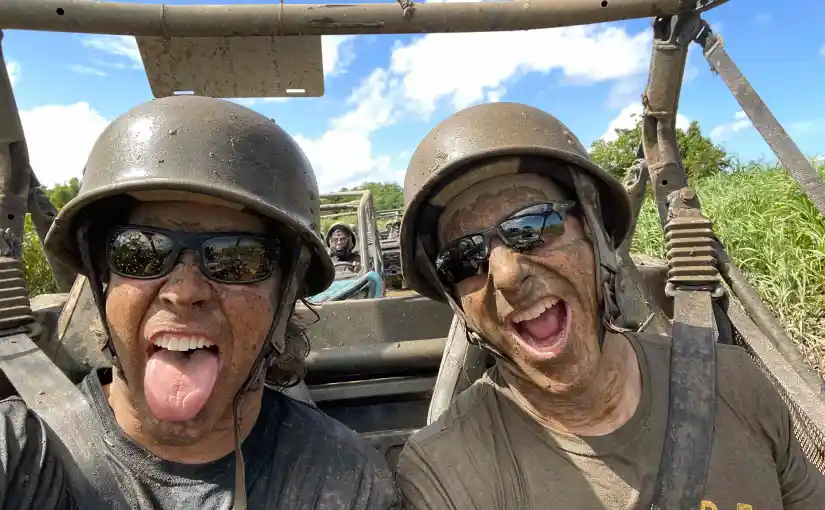I like good theories. They help simplify the world and make it easier to understand. They create order and predictability. But I often find that theories don’t apply to me.
Take the theory that people are either introverts or extroverts. I liked this theory when I first heard it. It seemed intuitive. It seemed obviously correct, at first. But it felt most correct when I applied the theory to others. It has always felt much less correct when I applied it to myself. Kinda like makeup.
Most people would categorize me as an extrovert. They would call me outgoing, personable, or engaging. They may call me a talker. Or talkative. Or loud. And sometimes I am. And sometimes I am not.
My great friend and University of Wisconsin Track and Field teammate Bryan Jones used to call me Sybil, referencing the 1976 film about a woman with a multiple personality disorder. I thought this was a funny observation. B.J. noted how I could laugh and joke around in the locker room, but when it was time to practice or lift weights, everything changed. No joking. Just intense focus, and yes, even quiet.
I am far too complex of a machine to simply label as an extrovert. Although most people will never see past an oversimplified categorization. I am outgoing. I interact easily with others. I can be loud. Really loud. Sorry, librarians. But that’s only part of me. The highly identifiable part. But just a part.
The other part of me is different. I enjoy my time alone. Because I like to think as much as other people think I like to talk. That’s why I enjoy my commute. That’s why I enjoy a long road trip by myself. I enjoy walking the dog, with or without a yo-yo.
While I have met many fun and interesting people on airplanes, I engage with my seatmates less than half the time. (And I don’t mean I only talk half of each flight.)
I write a lot. Writing is a quiet and solitary act. The kind of writing I do for my blog and my books requires a lot of self-reflection and analysis. This is the world of the introvert. And I spend a lot of time in this world. Which is why I identify with The Little Mermaid.
I have heard the theory that extroverts are energized socially. Interacting with others recharges them. Conversely, introverts recharge during quiet time alone. Like a mobile phone plugged in on the vanity overnight.
But this doesn’t apply to me for two reasons.
First, I don’t get my energy from other people. God gave me a lot of natural energy. I have a 2-year-old Border Collie named Lola. I see that God gave her the same energy package I got. It’s replenished with food and sleep. But as long as I do those 2 things, the energy is supplied whether I am socializing or not. Baby, I was born this way.
The other flaw in the theory that extroverts are reenergized by socializing is that, unlike Thomas Jefferson, I don’t believe that all people are created equal. At least not when it comes to socializing. There are loads of people that are not energizing to talk to. They are not interesting socially. And that’s ok. We don’t all need to be the Dos Equis man.
My theory is that people fall into 3 categories.
- Socially Energizing: These people are fun to be around. You leave interactions with them feeling a boost. Like those nutritional shakes they swig at nursing homes.
- Socially Inert: These people don’t move the needle one way or another. There are a lot of people in this category. Like people who go crazy for vanilla, and wear size medium.
- Socially Draining: These people are energy vampires. They suck the energy out of you. Sometimes they are negative. Sometimes they are difficult. Sometimes they are obnoxious. They are the reason you have to enter social situations with a prepared exit strategy. And maybe alcohol.
Remember, not all socializing is the same. Interesting, energetic, charismatic, and fascinating people are energy enhancers. Find those people. Spend time with them. But avoid the drains. You would be better off with a little quiet time by yourself. Regardless of how the world thinks you recharge.
Key Takeaway
Theories are nice ideas. But they are not rules. You don’t have to be categorized. Or labeled. Or stereotyped. Humans are custom-made. We don’t fall neatly into types. We are a messy scatterplot of non-conforming machines. You are hard to understand. So am I. That’s what makes this human adventure so interesting.
If you know someone who could benefit from this message, please share it with them.
+For more of the best life lessons I have learned check out my book, What Does Your Fortune Cookie Say? from Ripples Media.

